by Moe | Jun 12, 2013 | History of the Brotherhood, Meaning of Words
The name Nephilim is simply not an ancient word, but more a word of modern invention. If you research the ancient text of past civilizations, the name Nephilim cannot be found in the 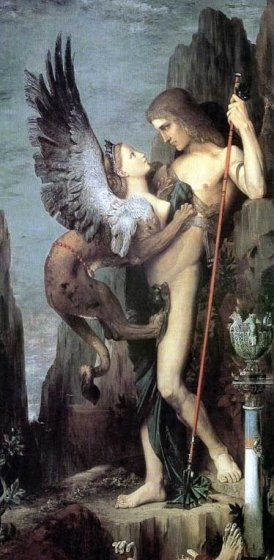 writings of the Egyptians, Assyrians, Greeks, or the Sumerians. To the Ancient Greeks- where much of our ‘current written’ ancient world history is derived from, the Nephilim were not even known, up until the 3rd century B.C. For example two of the greatest Greek historians who ever lived, Plutarch and Plato do not even mention the Nephilim once in their writings. However, I believe it is these historians where we get the “plot of the Nephilim biblical story.”
writings of the Egyptians, Assyrians, Greeks, or the Sumerians. To the Ancient Greeks- where much of our ‘current written’ ancient world history is derived from, the Nephilim were not even known, up until the 3rd century B.C. For example two of the greatest Greek historians who ever lived, Plutarch and Plato do not even mention the Nephilim once in their writings. However, I believe it is these historians where we get the “plot of the Nephilim biblical story.”
In studying the curious history of the Nephilim, I have found that it is simply not a name that we can trace back to any of the ancient empires who ruled the world over the last few thousand years. Hence, it is a modern name that was ‘invented’ to describe a “certain race of people or family” who are then mentioned twice in the Hebrew Bible, both in the Torah. The first is Genesis 6:1–4 NAS, immediately before the story of Noah’s ark (Wikipedia);
“Now it came about, when men began to multiply on the face of the land, and daughters were born to them, that the sons of God saw that the daughters of men were beautiful; and they took wives for themselves, whomever they chose. Then the LORD said, “My Spirit shall not strive with man forever, because he also is flesh; nevertheless his days shall be one hundred and twenty years.” The Nephilim were on the earth in those days, and also afterward, when the sons of God came in to the daughters of men, and they bore children to them. Those were the mighty men who were of old, men of renown.”
The second is Numbers 13:32–33 NAS, where the Twelve Spies report that they have seen fearsome giants in Canaan:
“So they gave out to the sons of Israel a bad report of the land which they had spied out, saying, “The land through which we had gone, in spying it out, is a land that devours its inhabitants; and all the people whom we saw in it are men of great size. There also we saw the Nephilim (the sons of Anak are part of the Nephilim); and we became like grasshoppers in our own sight, and so we were in their sight.”
 We are told in the bible that the Nephilim were on the earth in those days, and also afterward, when the sons of God came in to the daughters of men and they bore children to them. Those were the mighty men who were of old, men of renown” that are mentioned in the bible as the offspring of the “sons of God” and the “daughters of men.” In Greek culture, over the course of history there has been a large number of father gods and sons of gods; and in Ancient Greece there was actually a real family that were described in the same fashion- ” who were of old, men of renown and the sons of gods.” This race or particular family is mentioned by both Plato and Plutarch as “the oldest families in Thebes — a large part of the Boeotian aristocracy and the mighty men who were of old, men of renown.”
We are told in the bible that the Nephilim were on the earth in those days, and also afterward, when the sons of God came in to the daughters of men and they bore children to them. Those were the mighty men who were of old, men of renown” that are mentioned in the bible as the offspring of the “sons of God” and the “daughters of men.” In Greek culture, over the course of history there has been a large number of father gods and sons of gods; and in Ancient Greece there was actually a real family that were described in the same fashion- ” who were of old, men of renown and the sons of gods.” This race or particular family is mentioned by both Plato and Plutarch as “the oldest families in Thebes — a large part of the Boeotian aristocracy and the mighty men who were of old, men of renown.”
Thebes was the Capital of Boeotia, said to have been founded in 1500 B.C. by the Phoenician Prince, Cadmus who was the son of Agenor, king of Phoenicia. Cadmus was the Father and Founder of the Ancient City of Thebes and whose followers were known as the Boetians. The name Cadmus is originally derived from the Phoenicians Cadmon or Cadam-On, which denotes Cadam, meaning- The Son (Son of God-Nephilim). He is said to be the first person to introduce the use of letters into Greece. Also, the worship of almost every single deity in the entire world was introduced by the Phoenician Cadmus, AKA the Cadmonites of Palestine– who had come into Greece from ancient Palestine 1493 years before the Christian era, and to have died 61 years after.(1) Thebes was also the city of the god Amon-Ra and where the Temple of Light was located, known of today as the Temple of Luxor. The name Thebes is derived from the Greek word ‘Theba’ meaning Ark. Have you ever heard of the Ark of the Covenant?
Then we have the biblical connection of Cadmus, the Cadmonites and Hivites;
The Word Cadmus in Hebrew, signifies One who came from the East, and seems to determine him to have been of the Race of (a) the Cadmonites, which was a People in Palestina, the fame with the Hivites, who anciently descended from (b) Canaan the Son of Ham. Harmonia deriv’d her Name from Mount Hermon in that Country. Many of these Cadmonites inhabited (s) Mount Hermon, which was the most eastern Part of the Land of Canaan, and signifies the lame, as (d) Tabor lay in, and signify’d, The IVeji. His Soldiers the Hivites Mt said to be changed into Serpents, because the fame Word both in Syriack and Arabics signifies a Serpent. He was the Improver of Brass, and therefore (e) the Stone of which it was made, was call’d Cadmia, and the fame Word in the Hebrew Language signifies both Brass and a Serpent.
These priest were Gnostics whose symbol was the serpent, and their god Serapis. The various spellings of the name Serapis are Sor-apis (Σέραπις, Attic/Ionian Greek), Sarapis (Σάραπις, Dorian Greek), Serapin (Greek Ὄφις), or in Hebrew Seraph. All these names mean ‘serpent.’ The name ‘seraphim’ is the plural form of serpent and is also said to mean, “the burning ones.” Serapis is the Hellenized version of the Egyptian Osiris-Apis.
This same family was said to be the descendants of the children of Pytho the Nisibian, said to belong to the Sparti (Spartoi). They were a race of warlike, earth-born warriors. Their descendants were all said to have a mythical birthmark, and some of these men we know today as Nephilim. They were the founders of many countries around the world. Men such as Seleucus, the founder of the country we know today as Syria and the Secloid Dynasty. He was said to be the son of the god Apollo and he had a mythical birthmark shaped as an anchor on his thigh.
Plato writes about the Sparti and the mythical white birthmarks of this family, Laws 728 A. 2 Horace, Epistles 1. 1. 106. 3;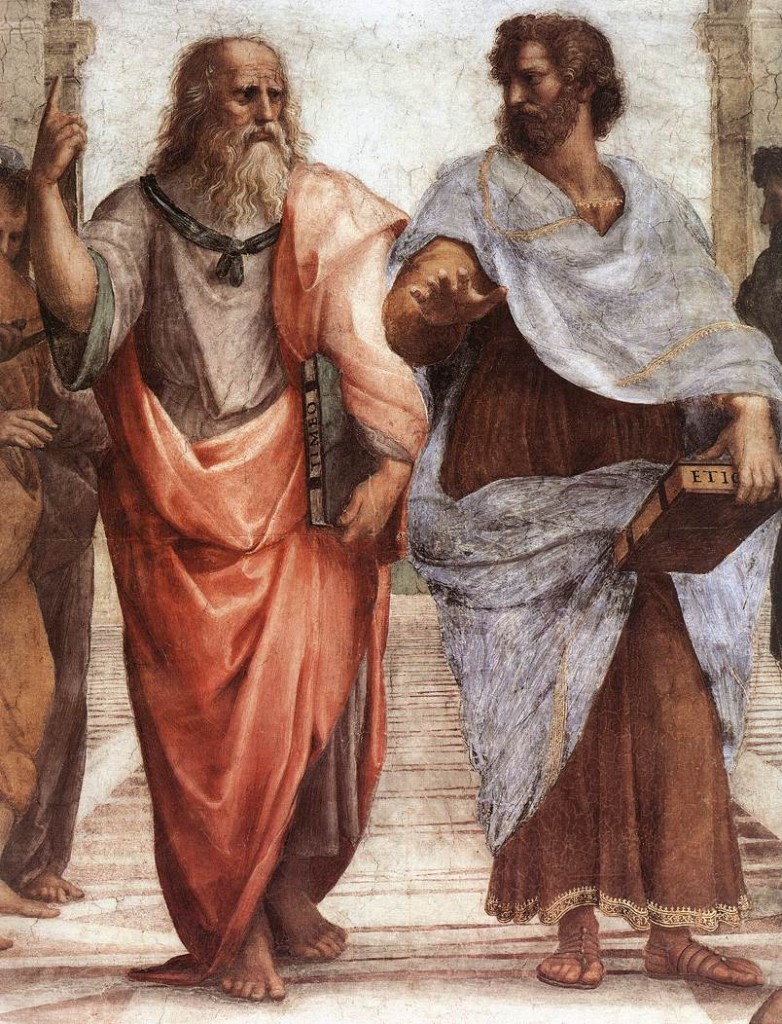
“The Sparti, sprung from the dragon’s teeth sown by Cadmus. Just so no good man who imparts his goodness to another was ever thought to have less virtue by as much as he had bestowed. So divine and excellent is that possession, and most true is the saying of the Athenian stranger, whoever that inspired man may have been: “All the gold beneath the earth and above ground is too little to give in exchange for virtue.”
Let us therefore now boldly call its possessor wealthy, yes and I should say well-born also, and the only king among them all, if anyone agree to this. For as noble birth is better than a lowly pedigree, so virtue is better than a character not in all respects admirable. And let no one say that this statement is contentious and too strong, judging by the ordinary use of words. For the multitude are wont to say that the sons of those who have long been rich are well-born.
And yet is it not extraordinary that a cook or cobbler, yes, by Zeus, or some potter who has got money together by his craft, or by some other means, is not considered well-born nor is given that title by the many, whereas if this man’s son inherit his estate and hand it on to his sons, they begin to give themselves airs and compete on the score of noble birth with the Pelopids and the Heraclids?
Nay, even a man who is born of noble ancestors, but himself sinks down in the opposite scale of life, could not justly claim kinship with those ancestors, seeing that no one could be enrolled among the Pelopids who had not on his shoulder the birth-mark of that family. And in Boeotia it was said that there was the impression of a spear on the Sown-men.”
There are connections in Ancient Syria of the Nephilim to a place called Nepha-tes that is situated in the country of modern-day Armenia near Taurus, Antitaurus, and Mount Ararat. This is where the Tigris and Euphrates rivers take their rise in this country. At one time, Syria was divided into five kingdoms that had extended from Cilicia and mount Amanus to Arabia and Egypt, and from the Mediterranean to the Euphrates. The ancient names of these kingdoms were Commagene, Seleucis, or Syria Propria, CeeIo Syria, Phoenicia, JudaVa, or Palaestina (Palestine).
Some of these same kingdoms you will also find in the bible or on modern maps which also place the Nephilim in Syria and a place called Nephates. The same country founded by a man who was fathered by a god; Seleucus who also had a mythical birthmark as described by Greek historians. The country called Palestina back then, is known today as Palestine and also called the Holy Land, the Land of Canaan of Israel, and of Judah. The same land that was first divided into twelve tribes, afterwards into the kingdoms of Judah and Israel, and last by the Romans into several districts. Phoenicia would of course be the land of the Phoenicians.
The Ancient Syrian Kingdom of Commagene (Armenian: Կոմմագենէի Թագավորութիւն, Greek: Βασίλειον τῆς Kομμαγηνῆς) was an ancient Armenian kingdom of the Hellenistic Age.
Commagene was a small kingdom, located in modern south-central Turkey, with its capital at Samosata (modern Samsat, near the Euphrates). It was first mentioned in Assyrian texts as Kummuhu, which was normally an ally of Assyria, but eventually annexed as province in 708 BC under Sargon II. The Persian Empire then conquered Commagene in the 6th century BC, and Alexander the Great conquered the territory in the 4th century BC. After the breakup of the Alexandrian Empire, Commagene was a state and province in the Greco-Syrian Seleucid Empire.
The Hellenistic kingdom of Commagene, bounded by Cilicia on the west and Cappadocia on the north, arose in 162 BC. This was the year when its governor, Ptolemy, a Satrap of the disintegrating Seleucid Empire, declared himself independent. Ptolemy’s dynasty was related to the Parthian kings, but his descendant Mithridates I Callinicus (109 BC-70 BC) embraced the Hellenistic culture and married the Syrian Greek Princess Laodice VII Thea. His dynasty could thus claim ties with both Alexander the Great and the Persian kings. This marriage may also have been part of a peace alliance between Commagene and the Seleucid Empire. From this point on, the kingdom of Commagene became more Greek than Persian.
In antiquity, Cilicia (Turkish: Kilikya, Armenian: Կիլիկիա, Greek: Κιλικία, Middle Persian: klkyʾy, Parthian: kylkyʾ) was the south coastal region of Asia Minor, south of the central Anatolian plateau. It existed as a political entity from Hittite times into the Byzantine empire. Cilicia extends inland from the southeastern coast of modern Turkey, due north and northeast of the island of Cyprus. This Trojan Cilicia is mentioned in Homer‘s Iliad and Strabo‘s Geography, and contained localities as Thebe, Lyrnessus and Chryse. These three cities were all attacked and sacked by Achilles during the Trojan War.(Wikipedia)
In Num. xiii. 33 the Nephilim are described as gigantic, and many dictionaries such as the Brown-Driver-Briggs Lexicon, gives the meaning of Nephilim as “giants.” Other explanations of the name base Nephilim as a word is a derivative of the Hebrew verbal root n-ph-l “fall.” Robert Baker Girdlestone gives good argument that the name comes from the Hiphil causative stem, implying that the Nephilim are to be perceived as “those that cause others to fall down.” Adam Clarke took it as passive, “fallen,” “apostates.” Ronald Hendel states that it is a passive form “ones who have fallen,” equivalent grammatically to paqid “one who is appointed” (i.e. overseer), asir, “one who is bound,” (i.e. prisoner) etc. (wikipedia)
However, the “sons of God” are explained in the Targum to Genesis 6:4 and the Midrash (Gen. R. 26:5) as young aristocrats who married the daughters of commoners. This explanation would coincide with the true history told to us by Plato and Plutarch and also the other pertinent facts I have detailed above.
” And it came to pass when men (the Adam) began to multiply on the face of the ground and daughters were born unto them ; then the sons of God (the Elohim) saw the daughters of men (the Adam) that they were fair, and they took to them wives of all that they chose. And Jehovah said, My spiiit shall not for ever rule (or be humbled) in men, seeing that they are [or, in their error they are] but flesh, and their days shall be a hundred and twenty years. The Nephilim were in the earth in those days ; and also afterwards when the sons of < Jod (the Klohim) came in unto the daughters of men (the Adam), and children were born to them, these were the heroes which were of old, men of renown.”
It is clearly explained in Genesis 6:4 that the offspring of the Nephilim were “mighty men of old, men of renown”. This exactly coincides with the true history told to us by both Plato and Plutarch who had also called these people,”the mighty men who were of old, men of renown from Boeotia.” This must not be a coincidence and it appears that some of these bible stories are based on the teachings of these Ancient Greek historians.
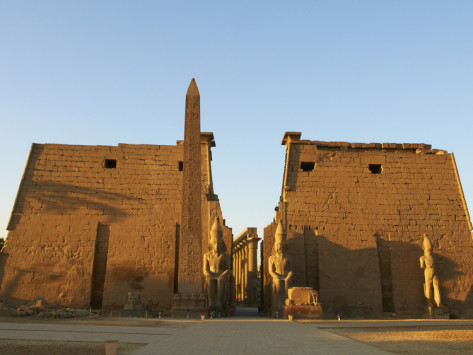 Based on the story above and my research on this blog, I would determine that the Nephilim are based on the real life history of this ancient family from Syria who we know of today as the sons of god. Their capital was at the city of the Ark, Thebes. The same exact area described in the bible as the Holy Land and where the priesthood of Amon-Ra had their strong hold. With its central location on the Nile, the priesthood of Thebes would be the main center of all the world’s manufacturing and creation for all arts, commerce and religion. A place where in actual true life history, Egyptian Pharaohs such as Ramesses II and his son, Ramesses III had communed with the gods at the temple of the Luxor, and even had set up two massive obelisks in front of it, one of which is now in Paris, France on display.
Based on the story above and my research on this blog, I would determine that the Nephilim are based on the real life history of this ancient family from Syria who we know of today as the sons of god. Their capital was at the city of the Ark, Thebes. The same exact area described in the bible as the Holy Land and where the priesthood of Amon-Ra had their strong hold. With its central location on the Nile, the priesthood of Thebes would be the main center of all the world’s manufacturing and creation for all arts, commerce and religion. A place where in actual true life history, Egyptian Pharaohs such as Ramesses II and his son, Ramesses III had communed with the gods at the temple of the Luxor, and even had set up two massive obelisks in front of it, one of which is now in Paris, France on display.
Is this all a coincidence or just the Apocalypse (unveiling)?
In part two of my series of articles on Who were the Nephilim, I will explain more about this family or race of people from Thebes that we know of today as the Nephilim.
by Moe | Jun 11, 2013 | Gods & Goddesses, Meaning of Words
“Be ye wise as serpents”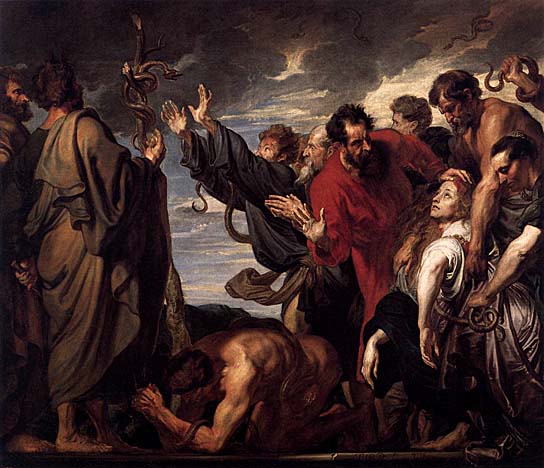
The ancient serpent-god of the Gnostics from the East was Serapis. The various spellings of the name Serapis are Sor-apis (Σέραπις, Attic/Ionian Greek), Sarapis (Σάραπις, Dorian Greek), Serapin (Greek Ὄφις), or in Hebrew Seraph. All these names mean ‘serpent.’ The name ‘seraphim’ is the plural form of serpent and is also said to mean, “the burning ones.” Serapis is the Hellenized version of the Egyptian Osiris-Apis.
Manly P. Hall had written in the Secret Teachings of All Ages: “The Gnostic Mysteries were acquainted with the arcane meaning of Serapis, and through the medium of Gnosticism this god became inextricably associated with early Christianity. In fact, the Emperor Hadrian, while traveling in Egypt in A.D. 24, declared in a letter to Servianus that the worshipers of Serapis were Christians and that the Bishops of the church also worshiped at his shrine. He even declared that the Patriarch himself, when in Egypt, was forced to adore Serapis as well as Christ.”
Plutarch informs us that it was the Greco-Egyptain Pharoah, Ptolemy I who had introduced Serapis or serpent worship from Sinope in Asia Minor to the East, where he had taken the place of all the Gods as the supreme deity during reign of the Ptolemy Pharaohs. From this time thereafter, the multitude of gods from all around the world such as Osiris, Buddha, Cadmus, Quetzalcoatl, and Ku Kulcan, would all be depicted with the emblem of the serpent in an attempt to integrate this serpent deity into all these cultures as a one world religion.
 Serapis is the serpent on the cross that was also the precursor to the Christian Christ, who would take the serpents place upon the cross in this Sixth Age under the religion of Christianity. Before the Christian era, the most ancient worship of the serpent was practiced in many areas of the world. The serpent on the cross was still worshiped up to the 7th century in England under the Druids. Tacitus, the Roman senator and historian had said that Serapis was worshipped as a type of universal deity that represented Jupiter, Osiris, Pluto, and sometimes Jupiter Ammon. The cult of Serapis had originated from the Greco-Egyptian priesthood under the Ptolemies, and the testimony of Pausanias says the temples of Serapis were the most famous at Alexandria, and the most ancient at Memphis.
Serapis is the serpent on the cross that was also the precursor to the Christian Christ, who would take the serpents place upon the cross in this Sixth Age under the religion of Christianity. Before the Christian era, the most ancient worship of the serpent was practiced in many areas of the world. The serpent on the cross was still worshiped up to the 7th century in England under the Druids. Tacitus, the Roman senator and historian had said that Serapis was worshipped as a type of universal deity that represented Jupiter, Osiris, Pluto, and sometimes Jupiter Ammon. The cult of Serapis had originated from the Greco-Egyptian priesthood under the Ptolemies, and the testimony of Pausanias says the temples of Serapis were the most famous at Alexandria, and the most ancient at Memphis.
The Ancient Egyptians had primarily used animals or half human /animal hybrids to represent their Gods. But the Ancient Greeks would never worship an animal as a God. These facts can be seen today with the naked eye, such as in the artwork left by the Egyptians who incorporated many animals as gods, and also the Greeks who had strictly used men or women in their art to represent their gods. This is the reason why many of these gods appear to have merged or were made into hybrid gods, to appease the various cultures that these Pharaohs had conquered.
More information about this story comes down to us from Tacitus, who informs us that Serapis had appeared in a dream 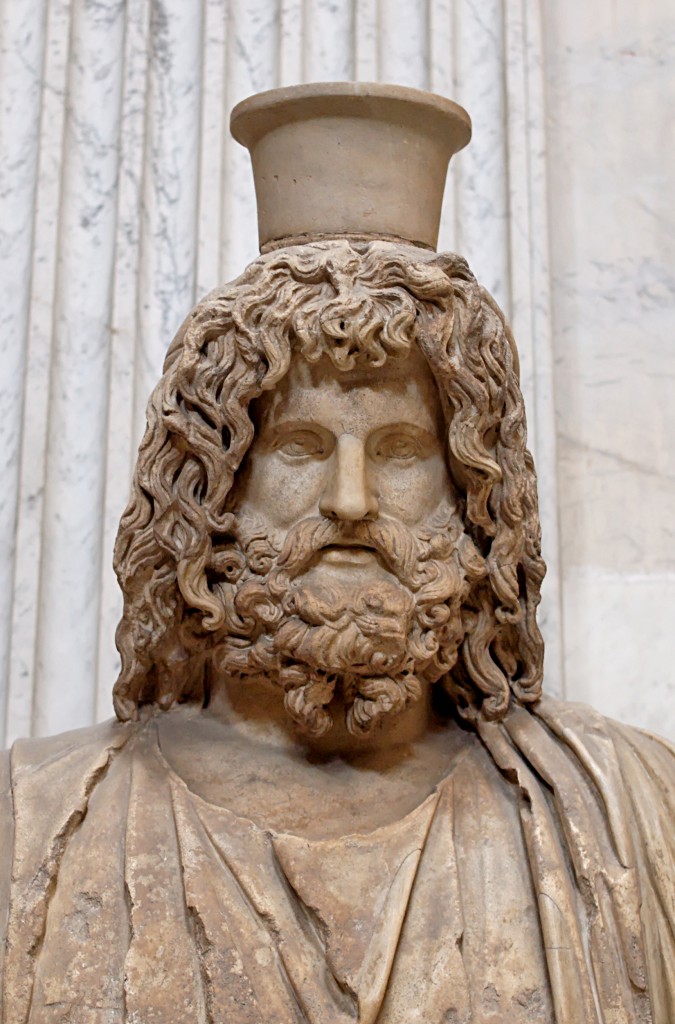 to Ptolemy as beautiful young man, and ordered him to Sinope in order to bring his statue to Egypt. The dream would align with the Greek influence on Serapis being depicted as a young man. The statue of Serapis, according to Macrobius, was of a human form, with a basket or bushel on his head, resembling plenty, and referring, as some say, to the history of Joseph’s supplying the Egyptians with corn.
to Ptolemy as beautiful young man, and ordered him to Sinope in order to bring his statue to Egypt. The dream would align with the Greek influence on Serapis being depicted as a young man. The statue of Serapis, according to Macrobius, was of a human form, with a basket or bushel on his head, resembling plenty, and referring, as some say, to the history of Joseph’s supplying the Egyptians with corn.
The Seraphim are the first hierarchy of angels who some say are demons that were Cherubim and Thrones. In the bible under Isaiah 6:6, it is said– “Then one of the seraphim flew to me with a live coal in his hand, which he had taken with tongs from the altar.” Beelzebub was a prince of the Seraphim, just below Lucifer. Lucifer is another word for phosphorus. The Latin word corresponding to Greek Phosphorus is “Lucifer.” Phosphorus (Greek Φωσφόρος Phōsphoros), a name meaning “Light-Bringer”, is the Morning Star.
The serpent is the symbol of wisdom, knowledge and Gnosis. The Serpent was venerated in Egypt as an emblem of Divinity, an oracle, and as a god. This Serpent-worship continued amongst the Samaritans in the West and in Europe, and with the Druids in Ireland, Scotland and Britain. The Masters of Wisdom, and all Initiates into the Sacred Mysteries, are called Nagas, or Serpents of Wisdom (Blavatsky). These Gnostic Serpent Priests of Wisdom from the East had went under various names such as the Ophites, and the Hivites who later became known as the Levites; all these names signify serpent. The Ophites were said to attribute all wisdom to the serpent, who was also the author of knowledge to men. In the ritual of Zoroaster, serpents were esteemed as gods and the superintendents of the world.
Manly P. Hall had written about the serpent in his famous book, The Secret Teachings of all Ages – “The accepted theory that the serpent is evil cannot be substantiated. It has long been viewed as the emblem of immortality. It is the symbol of reincarnation, or metempsychosis, because it annually sheds its skin, reappearing, as it were, in a new body. There is an ancient superstition to the effect that snakes never die except by violence and that, if uninjured, they would live forever. It was also believed that snakes swallowed themselves, and this resulted in their being considered emblematic of the Supreme Creator, who periodically reabsorbed His universe back into Himself.”
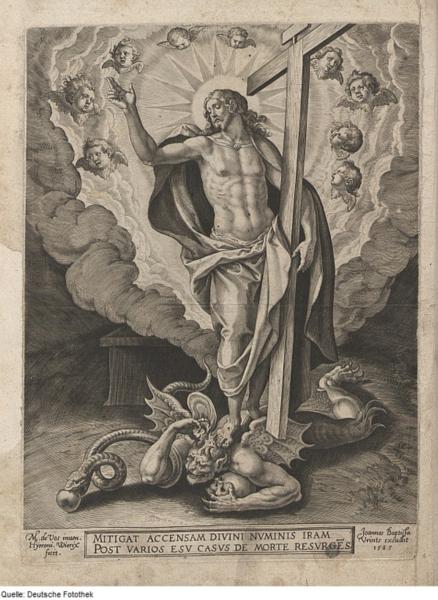 In the 3rd century, Tertullian said, Manes had taught Serpent Worship in Asia Minor under the name of Christianity, with teachings such as ” Christ was an incarnation of the Great Serpent, who glided over the cradle of the Virgin Mary when she was asleep at the age of a year and a half.” The main serpent cult of Serapis at Alexandria survived until the late 4th century, when a Christian mob destroyed the Serapeum of Alexandria in 385. The cult was part of the general proscription of religions other than approved forms of Christianity under the Theodosian decree. (Wikipedia)
In the 3rd century, Tertullian said, Manes had taught Serpent Worship in Asia Minor under the name of Christianity, with teachings such as ” Christ was an incarnation of the Great Serpent, who glided over the cradle of the Virgin Mary when she was asleep at the age of a year and a half.” The main serpent cult of Serapis at Alexandria survived until the late 4th century, when a Christian mob destroyed the Serapeum of Alexandria in 385. The cult was part of the general proscription of religions other than approved forms of Christianity under the Theodosian decree. (Wikipedia)
In Ancient England and Ireland, serpent worship would continue much longer up until the 6th century under the Druids, who were the Western descendants of the ancient serpent priests from the East. This would be the time when the Celtic Druid Church, under the leadership of the Iona Culdees had merged with the Roman Church to form a Universal Religion, known of today as Catholicism. The inner secret teachings of the serpent wisdom would be hidden from the masses, and replaced by an outer mystical religion veiled in allegory represented by Jesus Christ.
by Moe | Jun 5, 2013 | Meaning of Words
Many people are not aware that the bible is not only a history book of human kind over the last 6,000 years, but it is also the story of astrology and cosmology as it relates to the various human “races.” Many of the characters depicted in the bible are not really people, but planets, stars, and their alchemical effect on our bodies and souls. For example, the biblical Ham is not an actual person per say, but a reference to the heavens in which Ham represents the human form of the planet Jupiter. The ancient authors of classical antiquity saw Ham’s father Noah and his sons to be the counterpart of Saturn.
story of astrology and cosmology as it relates to the various human “races.” Many of the characters depicted in the bible are not really people, but planets, stars, and their alchemical effect on our bodies and souls. For example, the biblical Ham is not an actual person per say, but a reference to the heavens in which Ham represents the human form of the planet Jupiter. The ancient authors of classical antiquity saw Ham’s father Noah and his sons to be the counterpart of Saturn.
Psalm cv. 23-27. Israel also came into Egypt, and Jacob sojourned in the land of Ham.” The Egyptians were said to have called Ham, the father of Egypt who was the chief or first patriarch of Africa. Ham in mythology is the son of the gods in the sky which is the planet Jupiter, and Ham was the youngest son of Noah, Jupiter was the youngest son of Saturn. Jupiter is said in the Mythology to have rebelled against his father Saturn. (more…)
by Moe | May 30, 2013 | History of the Brotherhood
The Vikings were known for their notorious horned helmets. Here is an image of the Viking Norse God, Odin with his horned helmet and his upturned toed shoes.
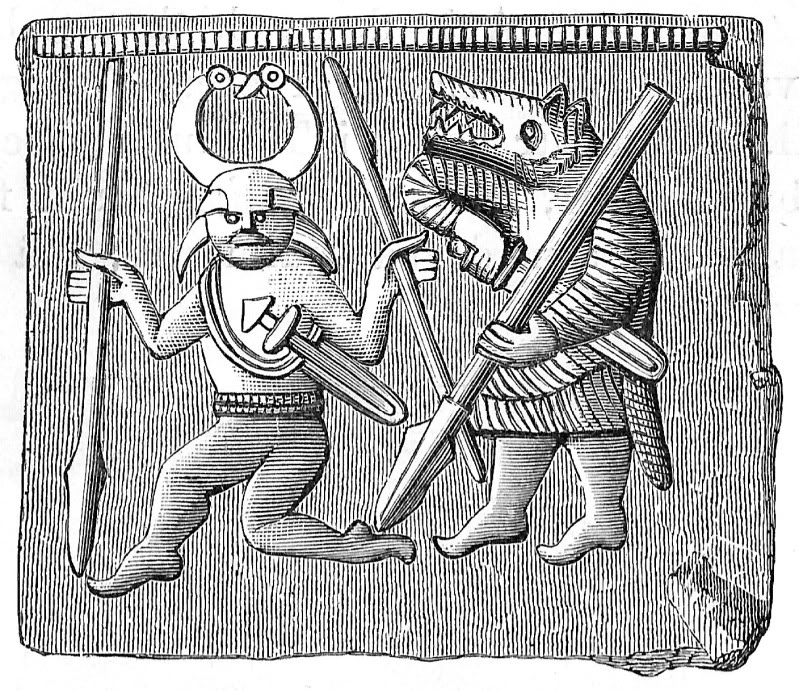
However, the Vikings were not the only people who were said to have worn or have been depicted in art with these horned helmets or Gods. The first people that I have found with this type of head gear were a people known as the Kheta, or the Hittites who were the sons of Heth (Ham, Amon or Jupiter). Here is an image of a Hittite God that I believe represents Jupiter, and is very similar to that of Odin above with the horned helmet and upturned shoes as well. Notice the Trident in his hands and the horned winged disk above his head.
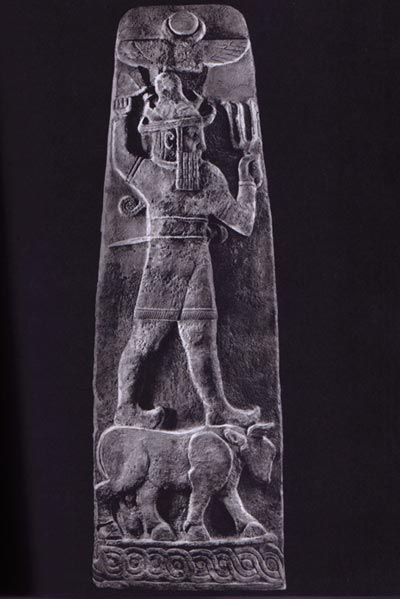
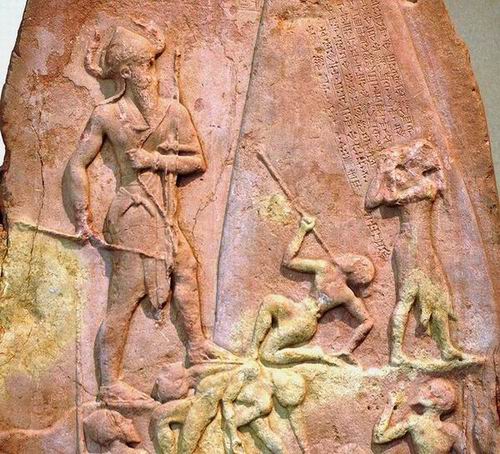
The next people who I have seen in my research with these horns and even the upturned shoes are from the Twentieth Dynasty of the New Kingdom of Ancient Egypt, that I believe to be Israel. Horns and upturned shoes are worn by Ramesses III.
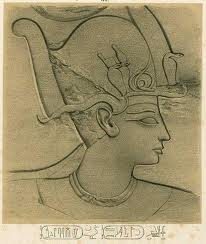
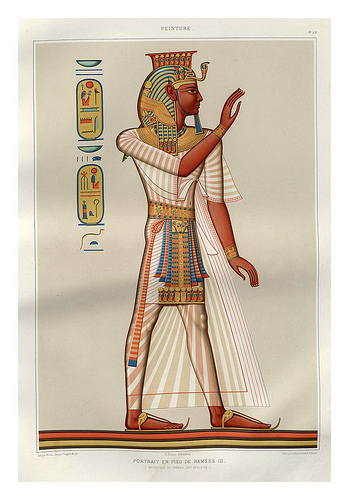 This tradition was carried on by the Priesthood of Jupiter Amon (Amun). The capital for their religion was located in the City of Light, or what we know of as Luxor. The God they had worshipped was god Amon-Ra (Jupiter-Amon). At the temple at Luxor there are many Ram Sphinxs that symbolize God Amon Ra.
This tradition was carried on by the Priesthood of Jupiter Amon (Amun). The capital for their religion was located in the City of Light, or what we know of as Luxor. The God they had worshipped was god Amon-Ra (Jupiter-Amon). At the temple at Luxor there are many Ram Sphinxs that symbolize God Amon Ra.
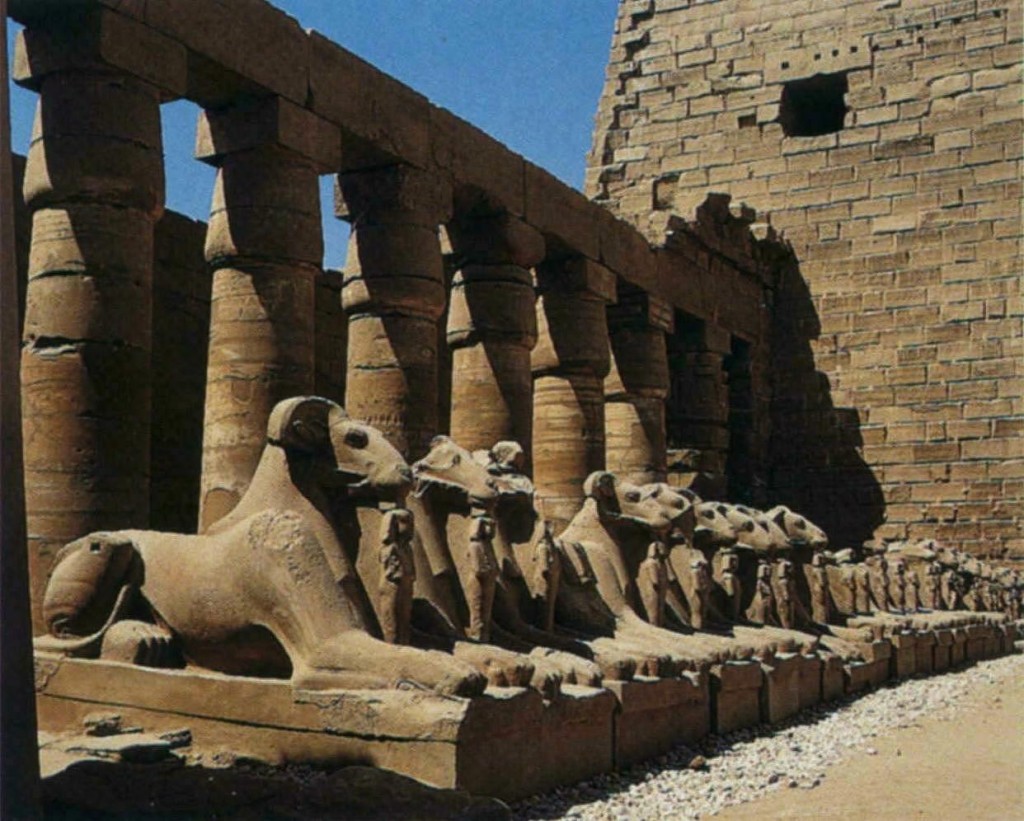
This coin below shows the horns of Jupiter-Amon on Alexander The Great around the period when the ancient city of Damascus was captured in 333 B.C.
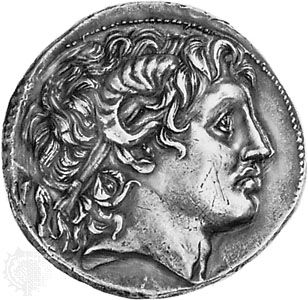
The image below is of Marc Antony on a Denarius 31 B.C. Cyrene. L. Pinarius Scarpus, moneyer with the horns of Jupiter Amon.
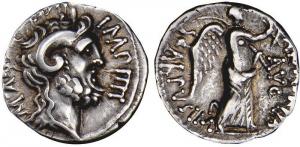
Here is one of the first images of the bronze “Ingot God” from Enkomi, 12th century BC, Cyprus
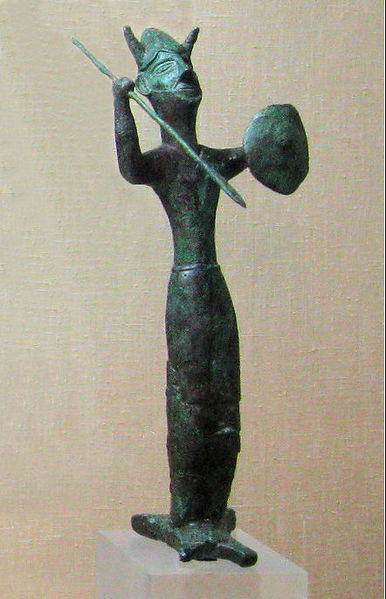
Plate C of the Gundestrup cauldron, 2nd–1st century BCE
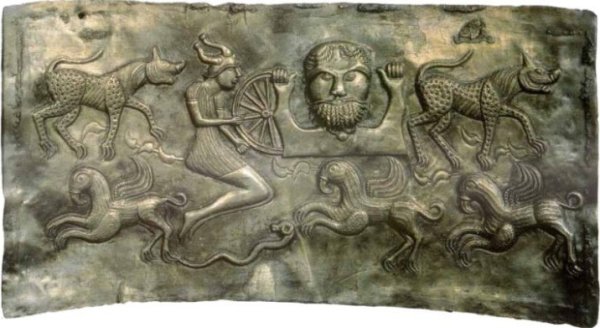
The Waterloo Helmet, ca. 150–50 BC, found in the Thames (British Museum)
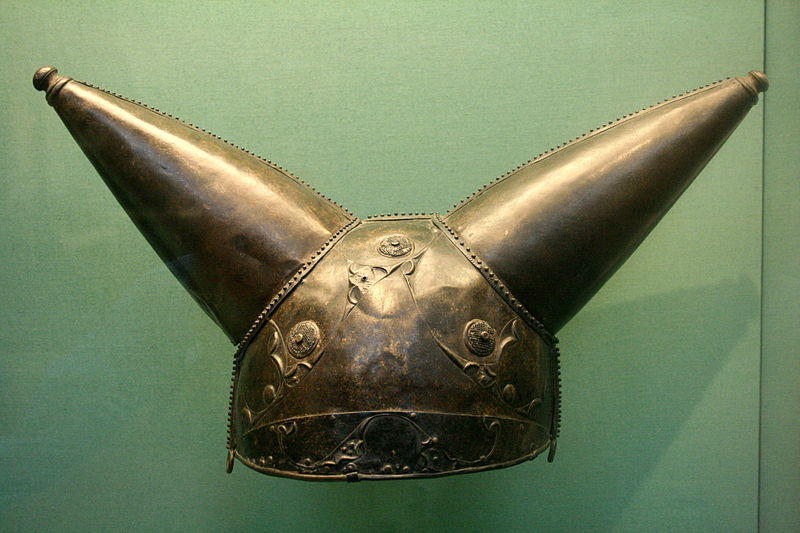
The question that we must ask is, “Who were the original people that had started this tradition?” All the evidence appears to point towards the Ancient Hittites who the later kingdoms of the Egyptians, Greeks and Vikings, who are seen with these very same exact horns, may very well be the descendants of the people known in the bible as the Hittites, the Sons of Heth (Ham) and the Kheta.
 in the far East. Also, this White House was not founded by Anglo-Saxon Freemasons such as George Washington either, but by their predecessors, the Ancient Egyptian Priesthood and the “sons of the sun,” the Pharaohs.
in the far East. Also, this White House was not founded by Anglo-Saxon Freemasons such as George Washington either, but by their predecessors, the Ancient Egyptian Priesthood and the “sons of the sun,” the Pharaohs.



















